For more than 70 years, the Leica M has reigned as what many consider the most iconic camera of all time. From the first M3 to the M11-P, an M is instantly recognizable, its familiar form firmly entrenched in the photographic zeitgeist. And while the design is unmistakable even at a glance, its true brilliance lies within.
With its intuitive, minimalist controls and precision optical-mechanical rangefinder coupled with legendary Leica lenses, the M stands apart in a world of increasingly automated and soulless cameras. Spend just a short time with one and the realization sets in: this is a camera built for picture making, not merely picture taking. Compact, discreet, and deliberate, the M encourages photographers to slow down, observe carefully, and shoot with intent.

And while the core concept has hardly changed over generations, Leica continues to refine and modernize the M to meet the needs of today’s digital photographers. With cutting-edge sensor technology, straightforward menus, built-in Wi-Fi, USB-C charging, high-quality Live View, and seamless FOTOS integration, digital Ms are no relics of the past. Exceptional image quality is matched only by their rugged, all-metal construction, engineered for years of use in the field.
But because all Leica M cameras share the same timeless design and core shooting experience, choosing the right one can sometimes be confusing. The differences are subtle but meaningful, often coming down to shooting style and personal preference. We’ve put together this guide to help you understand the nuances between all of the cameras in the M11 family.
The Current Digital M11 Lineup
The current M11 generation consists of five core models built on the same 60-megapixel BSI CMOS sensor and Maestro III processor platform: M11, M11-P, M11-D, M11 Monochrom and M EV1. Each shares the same image quality, lens compatibility, and overall build, but differs in design philosophy, intended use, and some functional differences. There are also some variants that differ only in cosmetic finish, so we'll dive into those as well.
Leica M11
First introduced in 2022, the standard M11 is the foundation of the lineup. Building upon the incredible M10-R before it, the M11 retains its instantly recognizable iconic design but packs a litany of improvements under the hood. At the heart of the camera, a cutting-edge 60-megapixel BSI CMOS sensor with dual gain design, ultra-thin cover glass, refined color filter array and Triple Resolution Technology delivers astounding image quality.
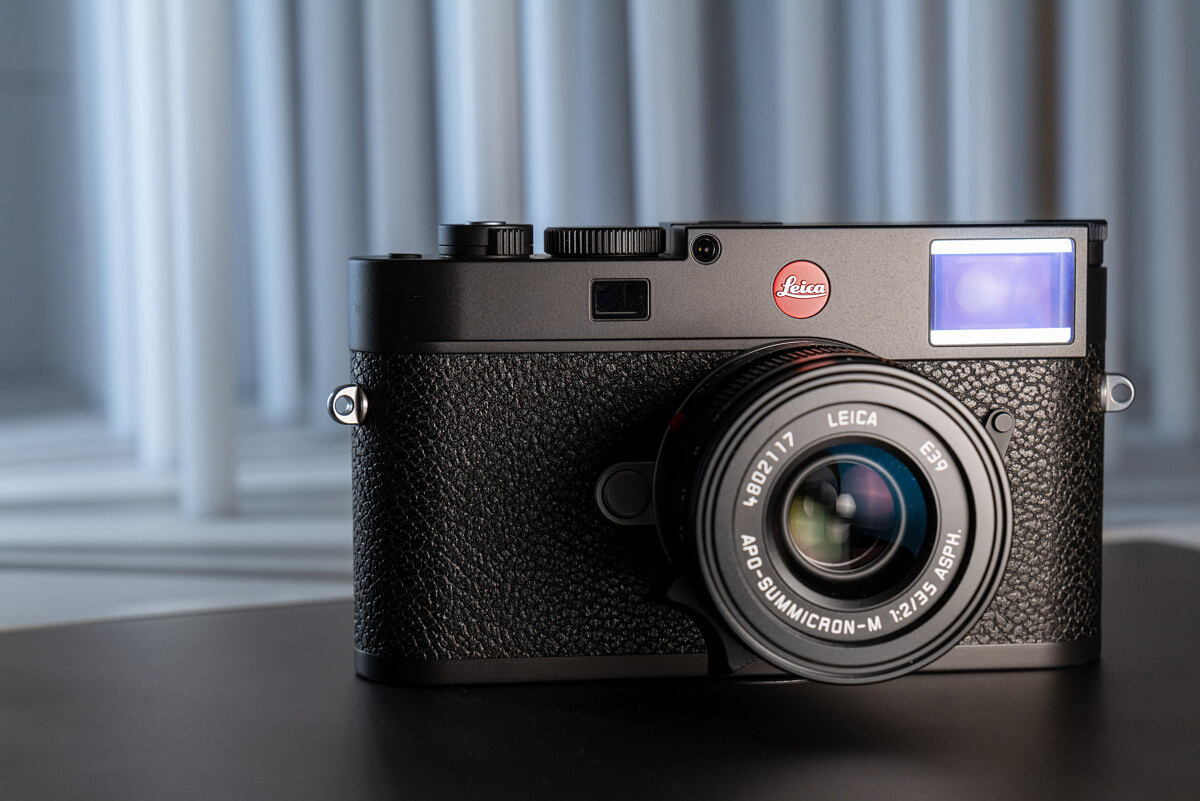
A speedy Maestro III processor combined with a large 3GB image buffer provides solid burst performance while UHS-II card compatibility and 64GB internal memory open up new options for storage and backup. Even with its always-on sensor-based multi-field metering and more responsive live view, the camera delivers all-day battery life with a larger battery and class-leading power efficiency. A USB-C port on the bottom of the camera provides for easy downloading and in-camera charging.
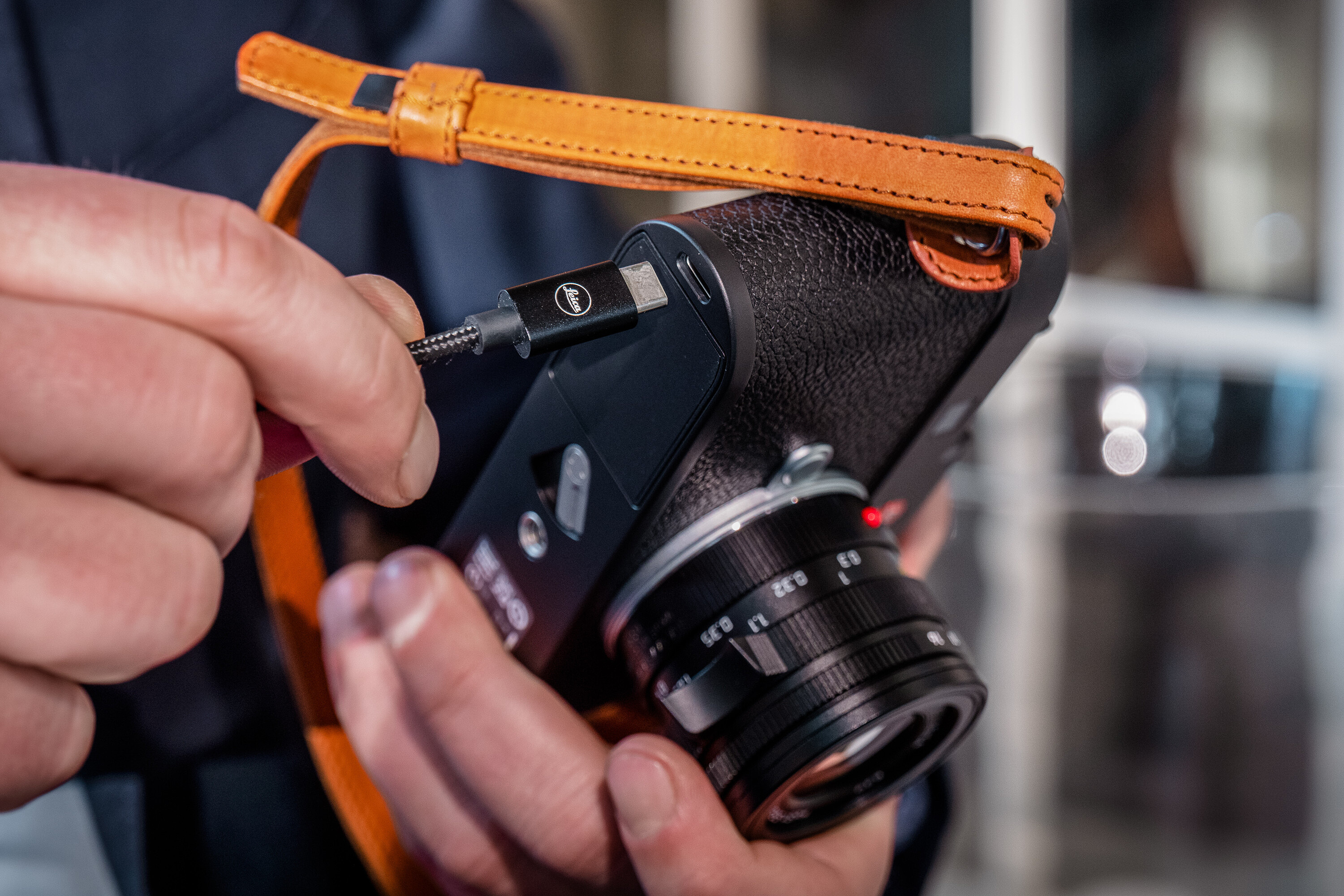
On the image quality front, the sensor on the Leica M11 captures up to 15 stops of dynamic range at its native base ISO of 64, while still delivering exceptional quality at even the highest ISO settings for amazing low-light images. For those not needing 60 megapixels all the time, the camera gives options for 36 and 18 megapixel DNG resolutions, saving card space, speeding up post processing and boosting burst shooting performance.
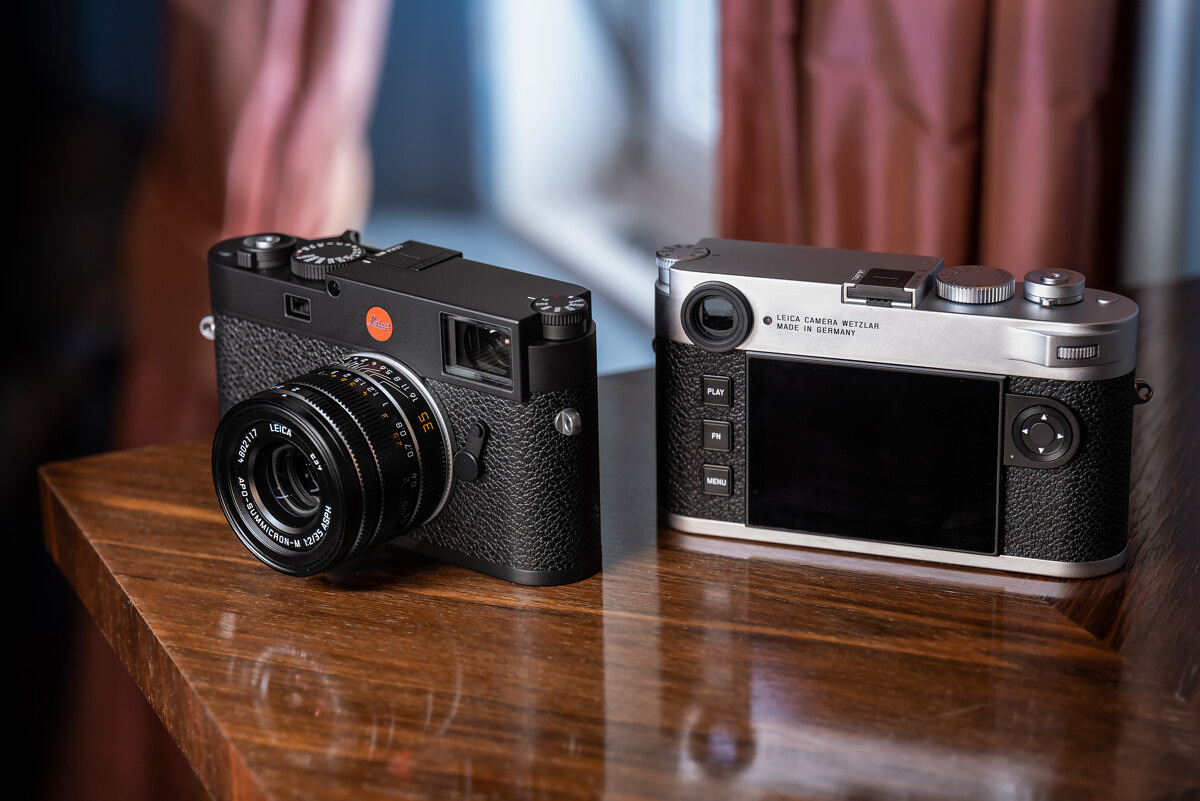
An electronic shutter with a maximum speed of 1/16,000 lets users of ultra-fast lenses shoot in bright daylight without the need for ND filters. And on the other end, long exposures up to one hour are possible, with or without long exposure noise reduction.
The optional Visoflex 2 electronic viewfinder slides into the camera’s hot shoe and features a 3.7-megapixel OLED display in an all-metal housing. Live View is available on the rear LCD touchscreen, which offers 2.3 megapixels, 800 nits of brightness, and full sRGB color gamut coverage. To assist with precise focus magnification when working with such a high-resolution image, Leica includes electronic stabilization for Live View shooting.
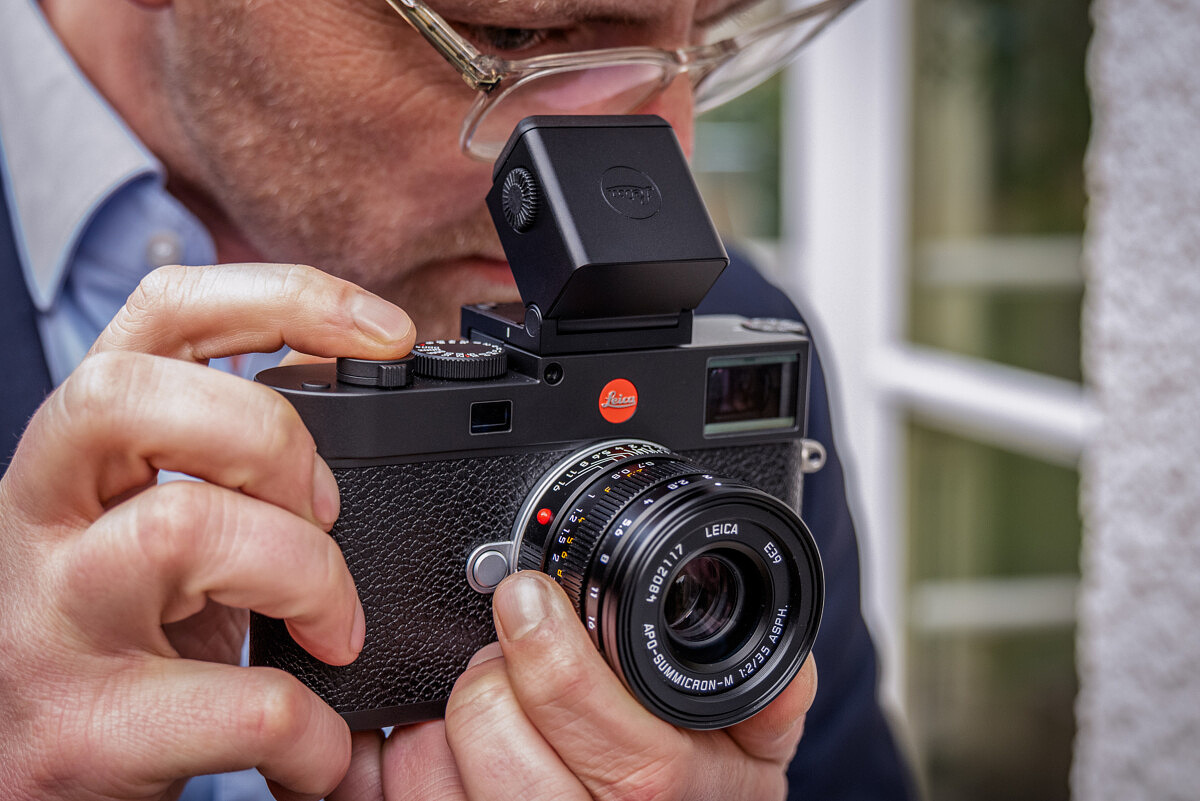
The camera body itself features notable changes from the M10 generation as well. The black finish weighs 20% less, trading the traditional brass top plate for machined aluminum. And, for the first time in almost 70 years, there is no removable base plate. Instead, the battery, card slot and USB-C port are all readily at hand. Also improving from the previous generation, the M11 gives users three assignable custom function buttons that can be set without digging through menus – the FN button on back, the top plate button next to the shutter release, and the clickable rear thumbwheel.
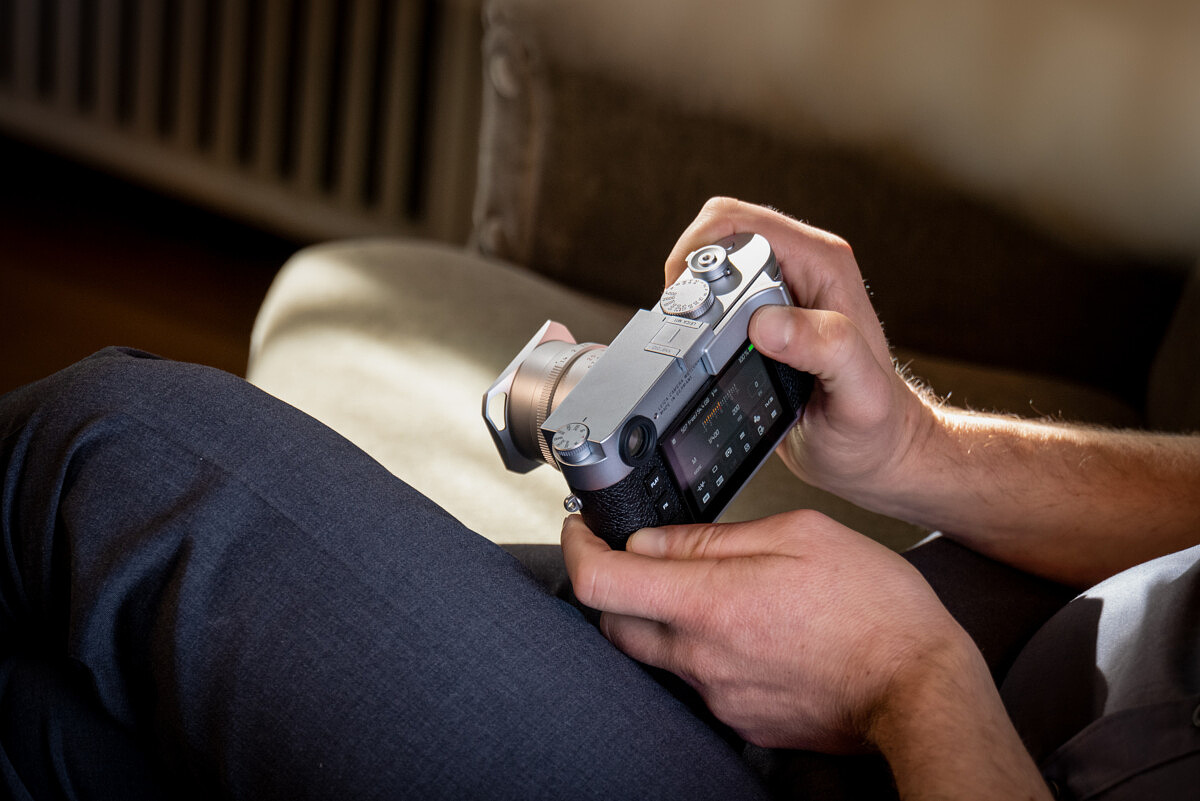
Following the release of the M11-P, Leica discontinued the standard black and silver variants of the M11, but there are often plenty of used ones available. The M11 (non-P) is now only available in a stunning Glossy Black finish.
Read my full in-depth M11 review here:
Leica M11 Review: The Ultimate Digital M
M11 Glossy Black
The Leica M11 Glossy Black Paint swaps out the standard aluminum top plate for classic brass, meaning it will patina with use over time, eventually revealing the bare golden metal from under the glossy painted finish. Vintage-inspired crosshatch knurling on the power switch, shutter speed dial, rear thumbwheel and ISO control adds some understated flair, as does the polished silver chrome shutter release.

And while the camera does bear some of the hallmark designs of the M11-P, like the omission of the red Leica dot on front and classic script engraving on the top plate, the internals are based on the M11, not the M11-P. This means the same incredible sensor paired with 64GB of internal memory and Gorilla Glass on the rear LCD.
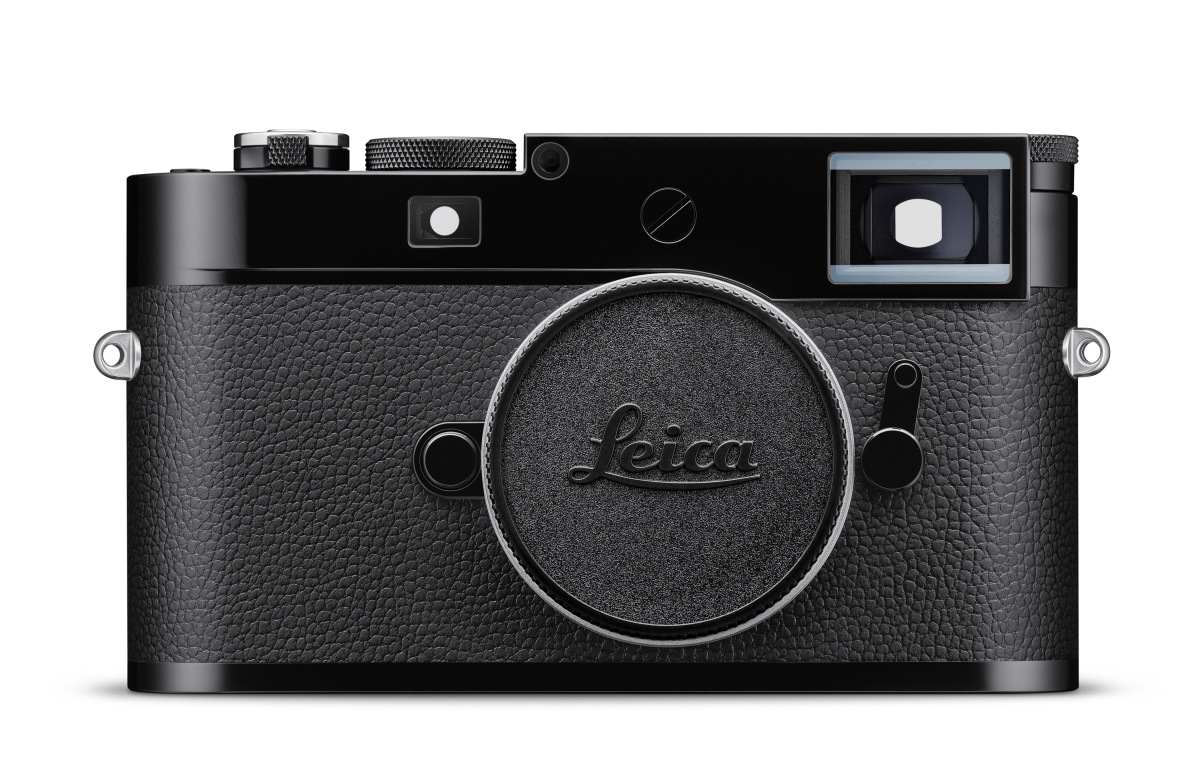
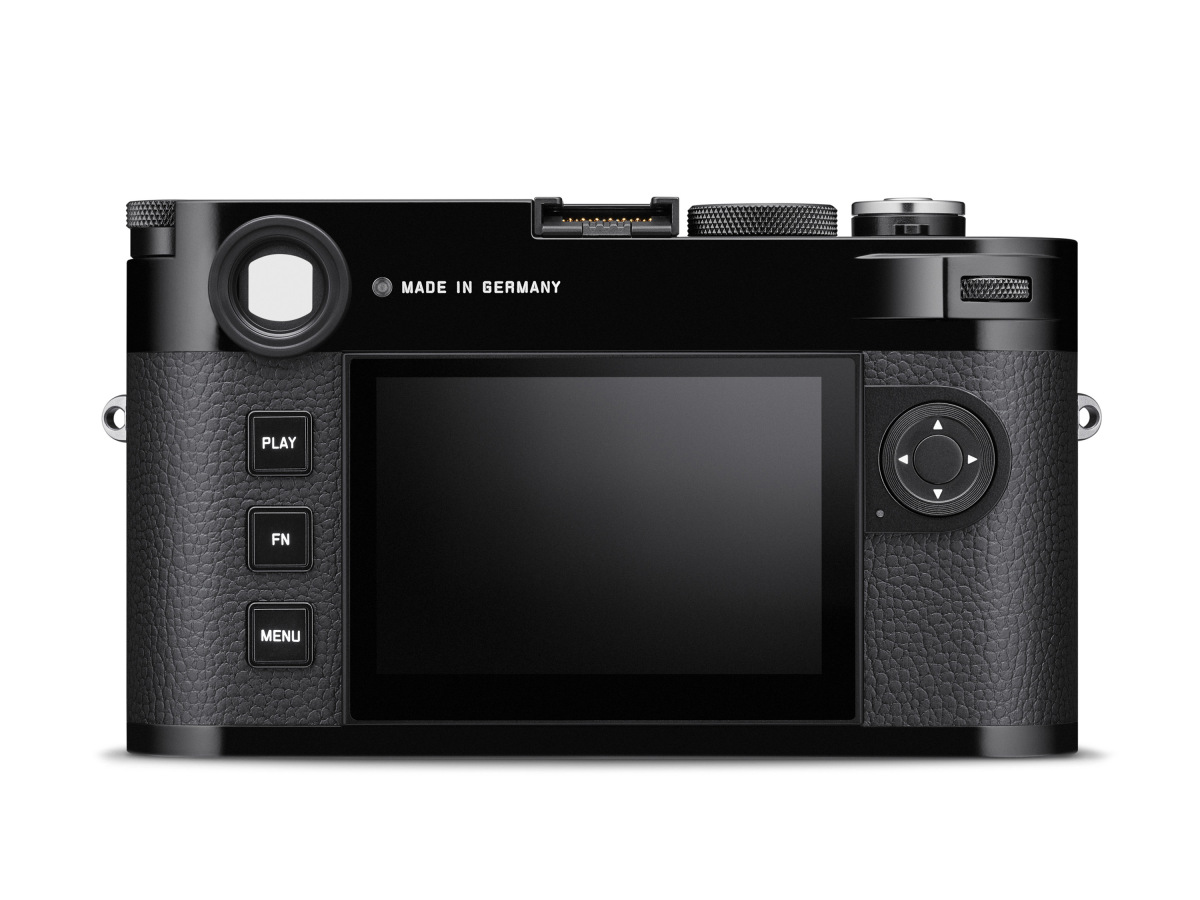
Leica M11 Monochrom
Now in its fourth generation, the purpose-built black and white digital M11 Monochrom is based off the exceptional M11 digital rangefinder platform with some changes. Under the hood, the dedicated monochrome 60-megapixel BSI CMOS sensor delivers 14-bit images with 15 stops of dynamic range, with the added benefit of no interpolation or per-pixel gain, due to the omission of the Bayer color filter array. And thanks to its dual-gain architecture, the sensitivity range goes all the way from a true base ISO of 125 all the way up to an eye-watering ISO 200,000. In real-world use, the M11M holds a 1.5 to 2 stop ISO advantage versus a full-color M11, making it an absolute beast for low light shooting.

For styling, the M11 Monochrom is as subdued as ever. Understated durable matte black paint and textured black leatherette cladding come standard. The shutter release, lens release button and top function button are all finished in flat black rather than contrasting chrome as on the M11. There is no script or red dot logo to be found, only a subtle, black-on-black engraving that simply reads ‘MONOCHROM’ in front of the black hot shoe on the top plate. Even the dials are devoid of color. No red ‘A’ markings on the shutter speed or ISO dial – just a simple gray to separate this choice from the other white-painted engraved numbers. The camera looks to be all business.
Like the black variant of the M11, the M11 Monochrom utilizes aluminum construction, rather than brass, making it significantly lighter than its M10 Monochrom predecessor. The 110g difference translates to an immediately-noticeable 20% reduction in overall heft, making the M11M very comfortable to use.
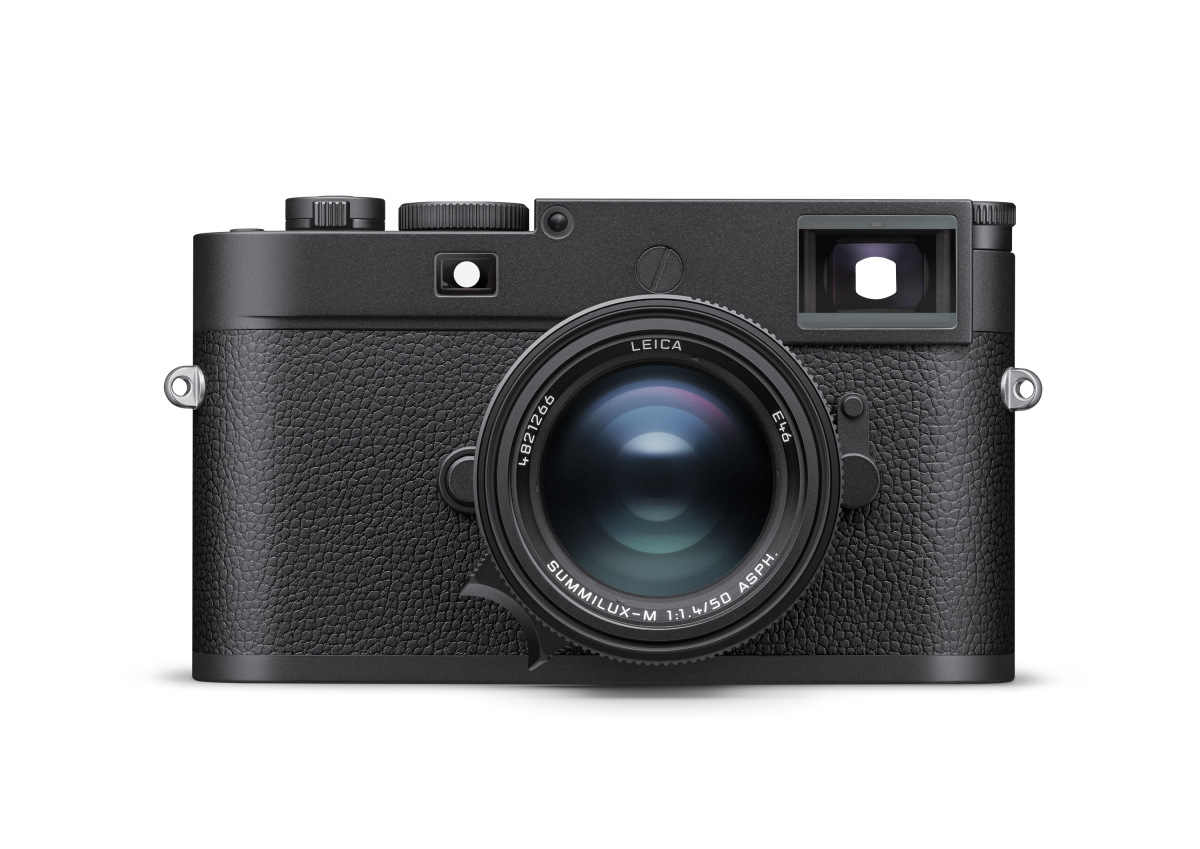

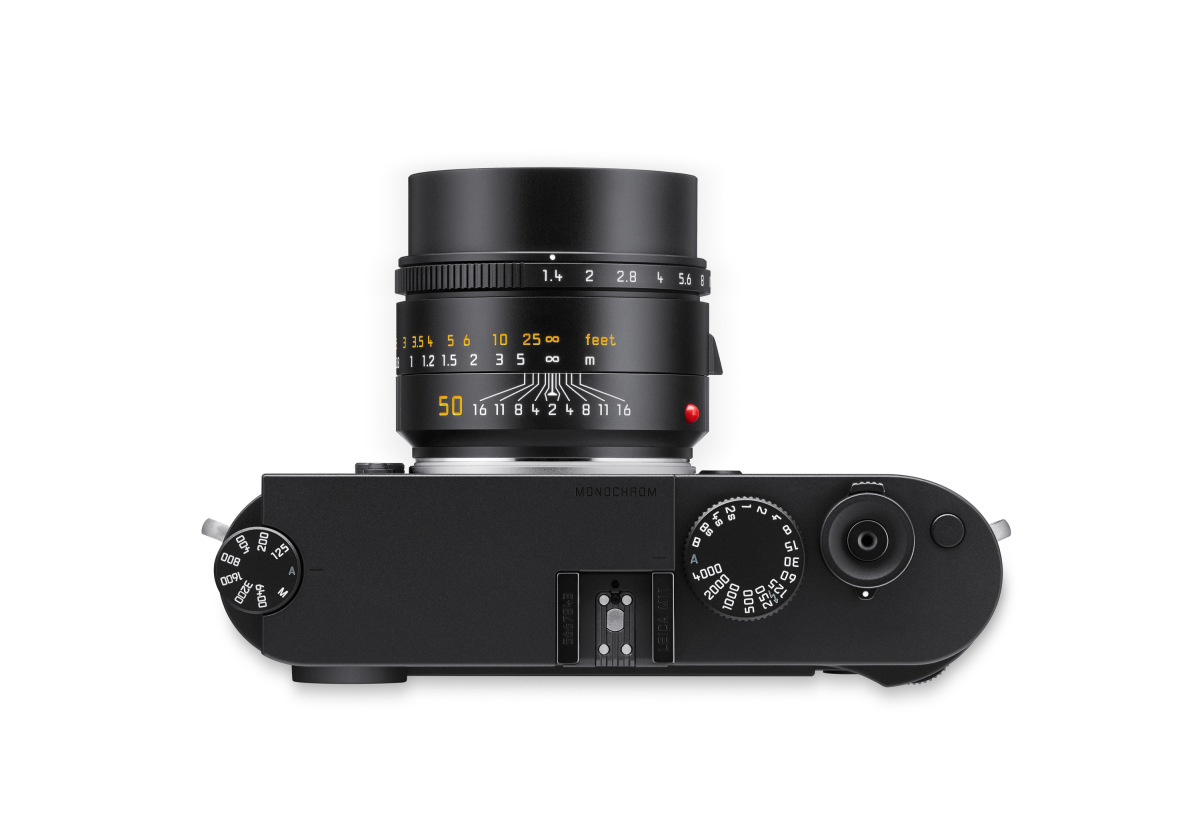
The M11 Monochrom also sports a sapphire glass screen covering over the rear LCD. This rugged, scratch-resistant surface protects the camera, but also looks crystal clear and doesn't interfere with touchscreen functionality.
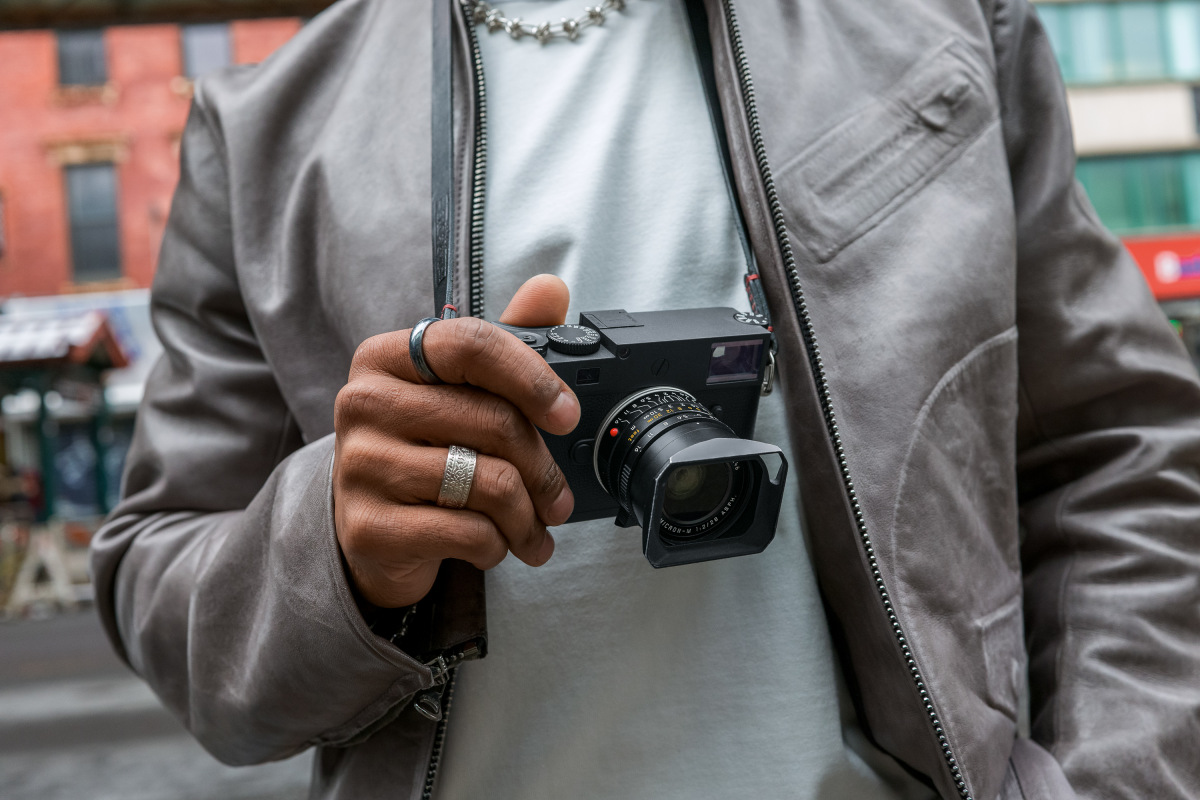
Technology-wise, the M11 Monochrom gets all the goodies from the M11 and then some. Maestro III processor, 3GB buffer memory, electronic shutter, sensor-based metering, triple resolution selection, UHS-II card compatibility, USB-C charging and data, updated Wi-Fi and Bluetooth connectivity, Apple MFi certification, enhanced power efficiency, three assignable custom function buttons, 2.3 megapixel rear LCD, electronically stabilized live view and 256GB of internal memory all add up to a seamless shooting experience.
Read my full in-depth review of the M11 Monochrom here:
Leica M11 Monochrom Review: Pure B&W Performance
Leica M11-P
Building on the M11’s foundation, the M11-P adds professional refinements that emphasize durability, discretion, and image integrity. While image quality remains identical to the standard M11, the internal memory has been bumped from 64GB on the M11 to a full 256GB, and the camera now sports a scratch-resistant sapphire glass over the rear LCD and black-chrome-trimmed optical viewfinder – changes first introduced on the M11 Monochrom and welcome here. The M11-P is also the first camera, Leica or otherwise, to come with a built-in hardware encryption chip, enabling it to digitally sign images with content credentials.

The M11-P is offered in both black and silver finishes. And same as the standard black M11 and Monochrom, the black M11-P has a top plate made from aluminum and will clock in 20% lighter than the heftier silver version, which features a brass top plate. As with other digital “P” versions before, traditional Leica script adorns the top of the camera and the red dot Leica logo on the front is replaced with a simple screw. Classic as always.

Content Credentials
The M11-P is the first camera to fully integrate Content Credentials through the Content Authenticity Initiative, spearheaded by Adobe. With a dedicated secure chipset inside the camera storing a trusted certificate, each image is digitally signed using a C2PA confirmed algorithm. The encrypted metadata guarantees content integrity and origin verification. These credentials can't be modified without re-signing since the image and digital signature are cryptographically sealed together, ensuring that image provenance is accurate and protected. Over 300 companies have joined the Content Authenticity Initiative (CAI), but Leica is the first camera manufacturer to implement this technology at the hardware level.
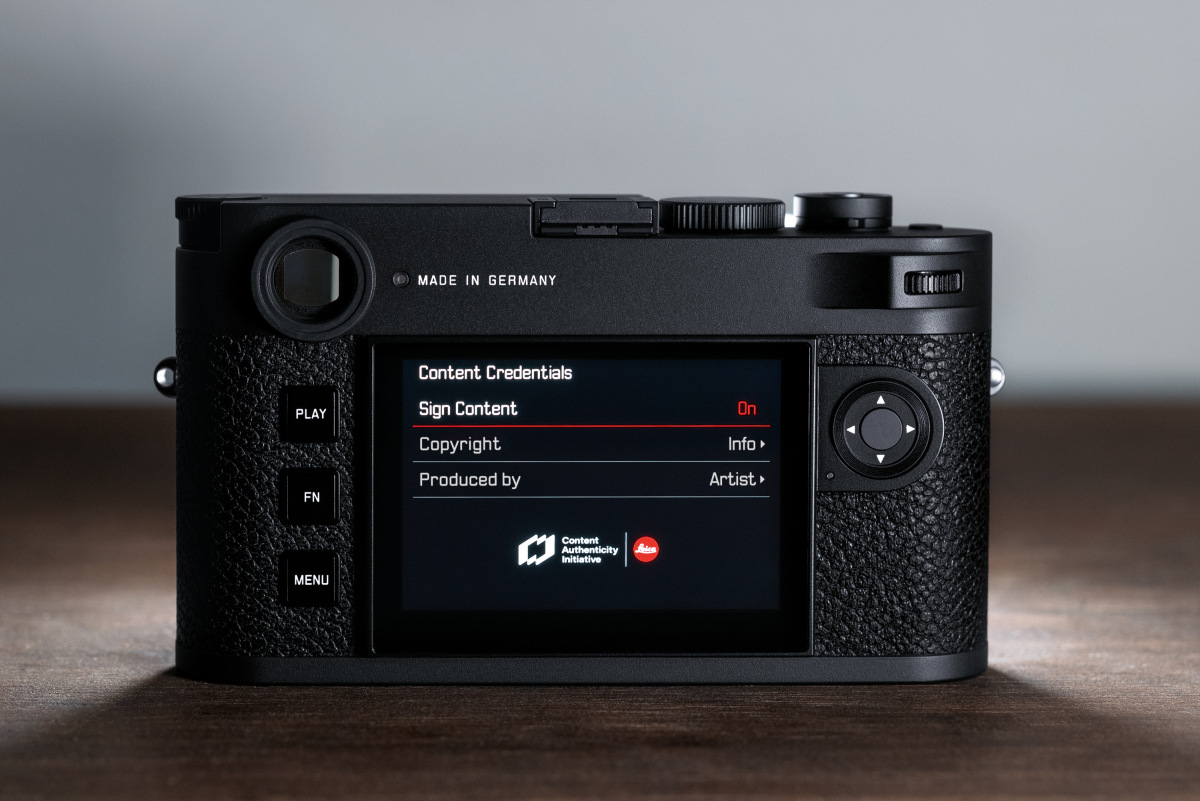
The M11-P Safari carries forward Leica’s long-standing tradition of olive-green cameras that dates back to the M3 “Olive” of the 1960s and the military-issued M4s that followed. While technically identical to the standard M11-P, the Safari edition features a distinctive green painted finish on its brass top plate and base with silver-chrome controls, giving it a rugged yet refined appearance. Functionally, it offers the same 60-megapixel BSI sensor, 256 GB internal storage, Content Credentials support, and sapphire glass LCD. The Safari models are produced in limited quantities, making them popular among collectors while remaining fully suited for everyday professional use.
Leica M11-P Safari
The M11-P Safari carries forward Leica’s long-standing tradition of olive-green cameras that began in the 1960s with the M3 “Olive” and the military-issued M4s that followed. Originally developed for durability and camouflage in harsh environments, the distinctive green finish quickly became one of Leica’s most recognizable and collectible design signatures. Over the decades, Leica has reimagined the Safari look across several limited editions, blending utilitarian heritage with refined design.


Based on the standard M11-P, the Safari variant features the same 60-megapixel BSI CMOS sensor, Maestro III processor, and internal 256GB of storage. The M11-P Safari also offers hardware-encrypted Leica Content Credentials, allowing for tamper-proof metadata to be embedded at capture. Sapphire cover glass on the rear LCD offers exceptional scratch resistance, ensuring reliability in both professional and travel use.

Visually, the M11-P Safari stands apart with its scratch-resistant matte olive enamel finish on the solid brass top and base plates, complemented by a matching olive green leatherette covering. The silver-chrome controls on top and front contrast beautifully against the green body, while the rear buttons remain black for a cohesive, familiar interface. The overall look is minimal, classy and timeless.
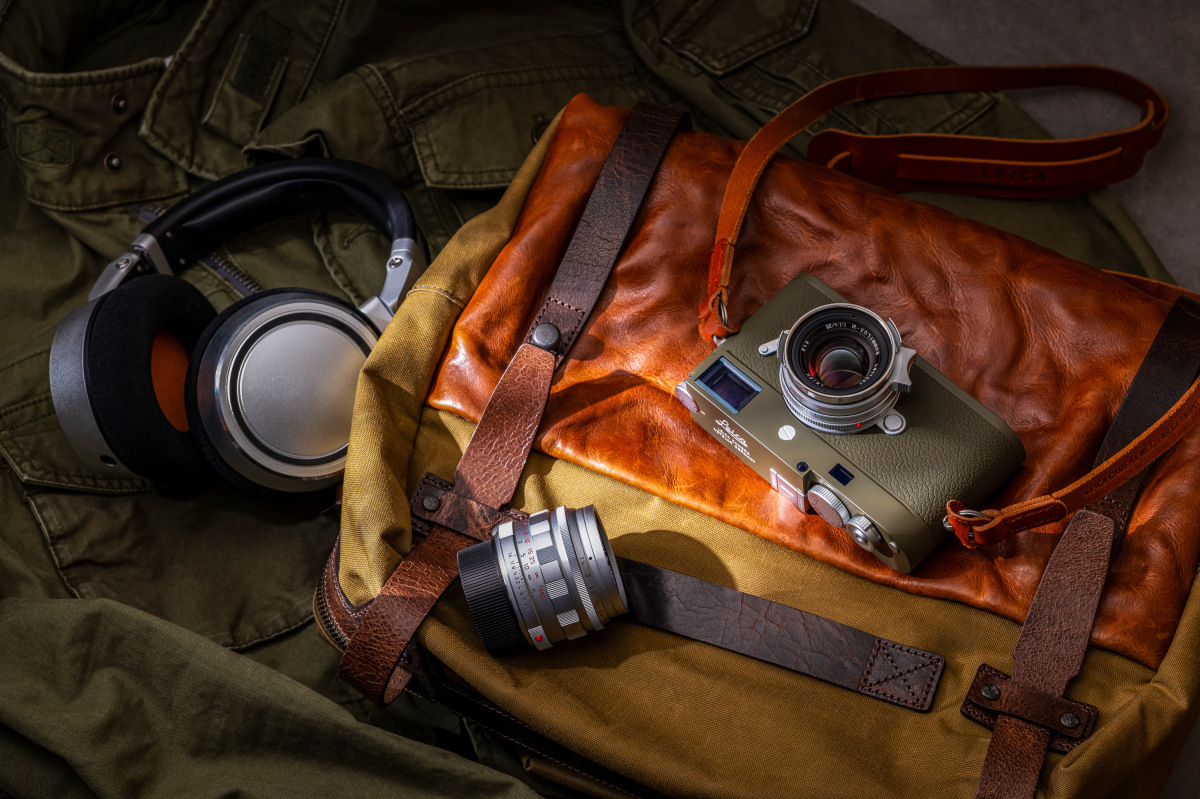
As with other P-series models, the front of the camera omits the red Leica dot in favor of a discreet silver screw, and the top plate bears the classic Leica script inlaid in white enamel. Unique to this edition is a matching olive anodized battery cover, creating a seamless, uniform finish from top to base.
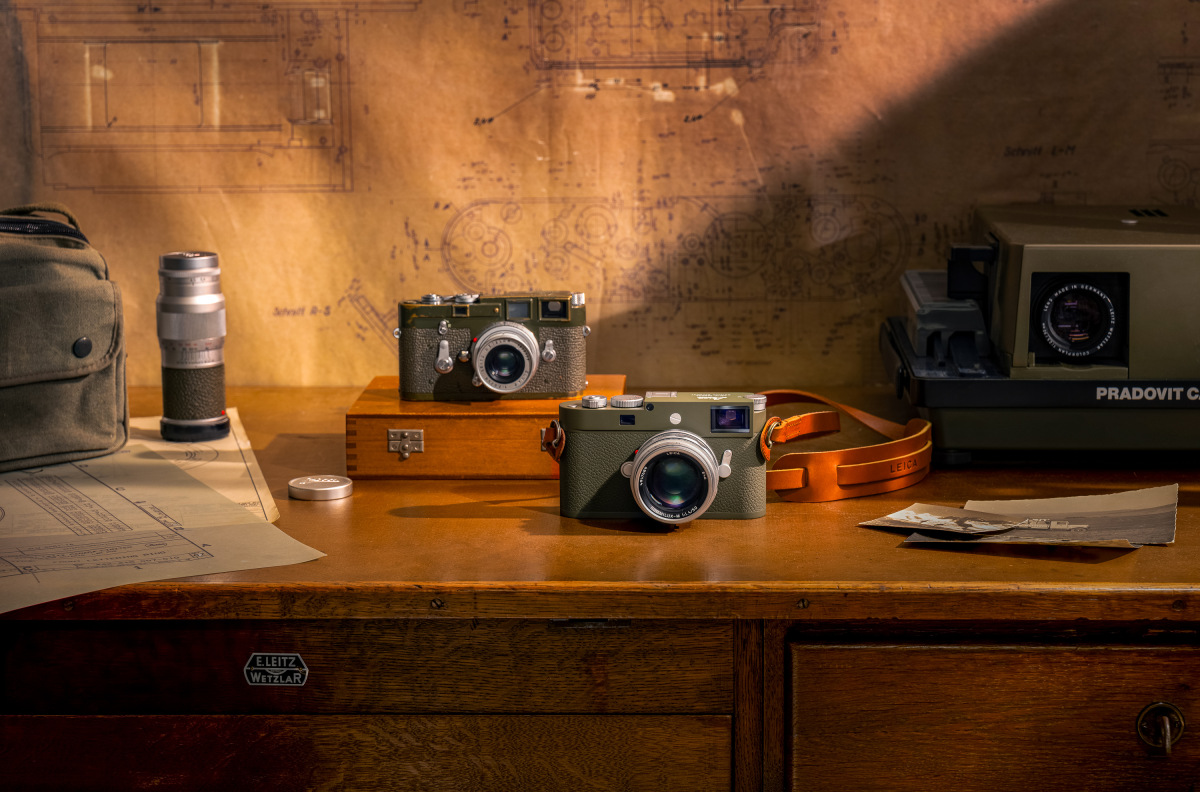
While production is limited, the M11-P Safari joins the regular lineup rather than being a one-off special edition. It captures the essence of Leica’s design heritage – rugged, timeless, and unmistakably distinctive – while remaining a fully capable tool for everyday professional use.

M11-D
The Leica M11-D takes the analog aesthetic to a whole new level. With no LCD display on the back and leaning heavily into classic M styling, the camera could easily be mistaken for a film M. Sporting a matte black paint finish, white classic Leica engraved script on top, no red dot on the front and black leatherette covering, the M11-D looks subtle and classic.

The lack of a rear display on a digital M was first seen in the limited Leica M Edition 60, which commemorated 60 years of M photography in 2014. Due to popular demand, Leica rolled out the same concept in a regular production model, the M-D (Typ 262), less than two years later. And while the M-D 262 had the right idea, functionality was limited, with no way to adjust settings. Some users also felt that the M240-based body was still too thick to be a pure M. Then, in 2018, Leica introduced the M10-D, which addressed all the concerns of the M-D 262 and put forth the most analog-feeling digital camera ever made. And now, with the introduction of the M11-D, we're seeing huge generational improvements in technology and functionality.
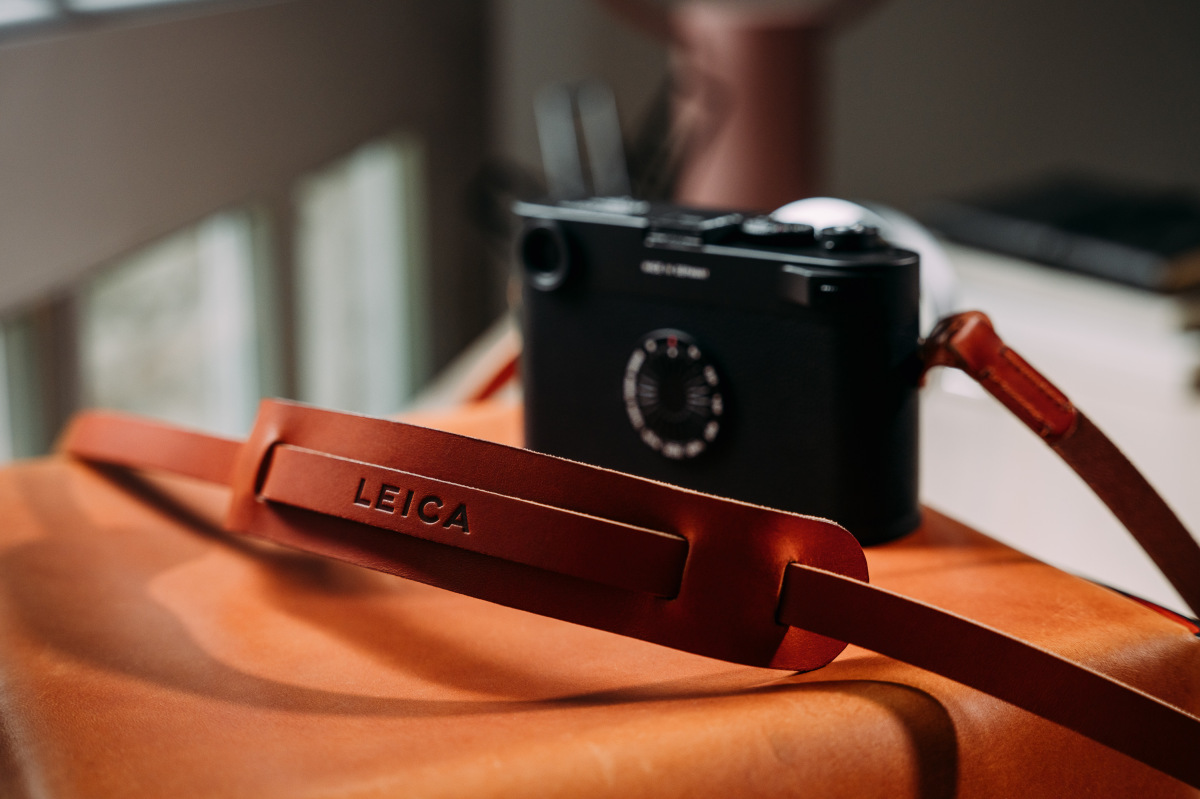
Based on the M11-P, the M11-D gets some notable upgrades over the previous M10-D. While the M11-D body looks very similar from the outside, it clocks in 120g lighter than its predecessor thanks to the switch from brass to aluminum construction. Under the hood, the well-loved 24-megapixel CMOS sensor and Maestro II processor get bumped up to the latest 60 megapixel triple-resolution BSI CMOS sensor, speedy Maestro III and a 3GB buffer, offering shooting in 60, 36 or 18 megapixels, at up to 5 fps. The only omission from the previous M10-D is the dummy shutter advance lever. Leica received mixed reactions to this adornment in the M10-D, as it was nice aesthetically, but served no real function. So, it's been omitted on the M11-D. For those seeking to add some additional support, any M11-compatible thumb rest and/or hand-grip will do the trick.
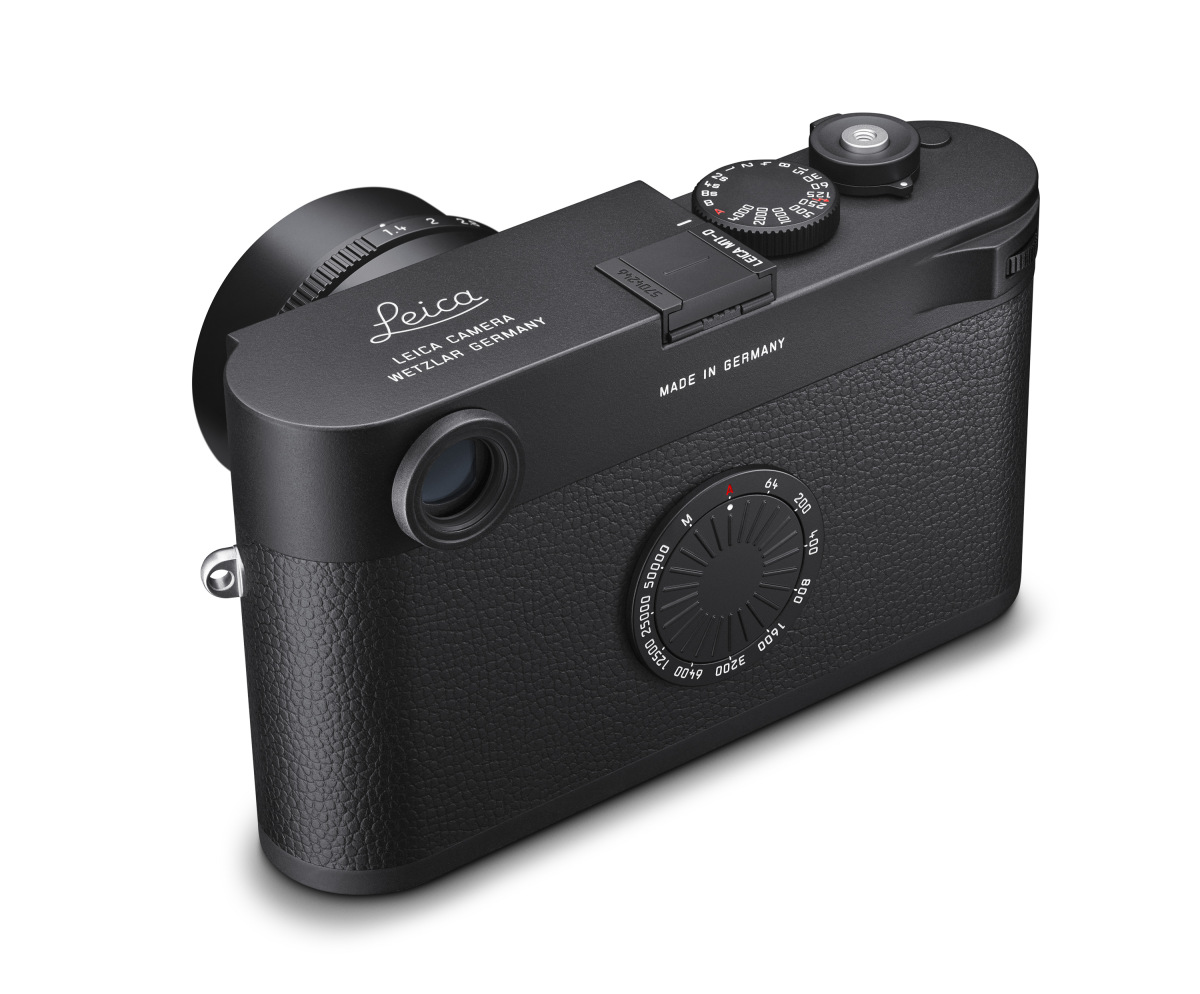
And just like the M11-P, the D variant includes 256GB of internal memory, UHS-II card support, the latest BP-SCL7 rechargeable battery, USB-C for high-speed data and charging, fast Wi-Fi, Bluetooth 4.2, electronic shutter, dark chrome viewfinder, and no removable bottom plate. Also notable is the inclusion of a dedicated hardware-based Leica Content Credentials encryption chip. Based on the framework described by the Content Authenticity Initiative (CAI) and the open technical standard of the Coalition for Content Provenance and Authenticity (C2PA), the authenticity of the pictures taken with the Leica M11-D can be verified at any time. Following the M11-P, this was the second camera to include this technology.
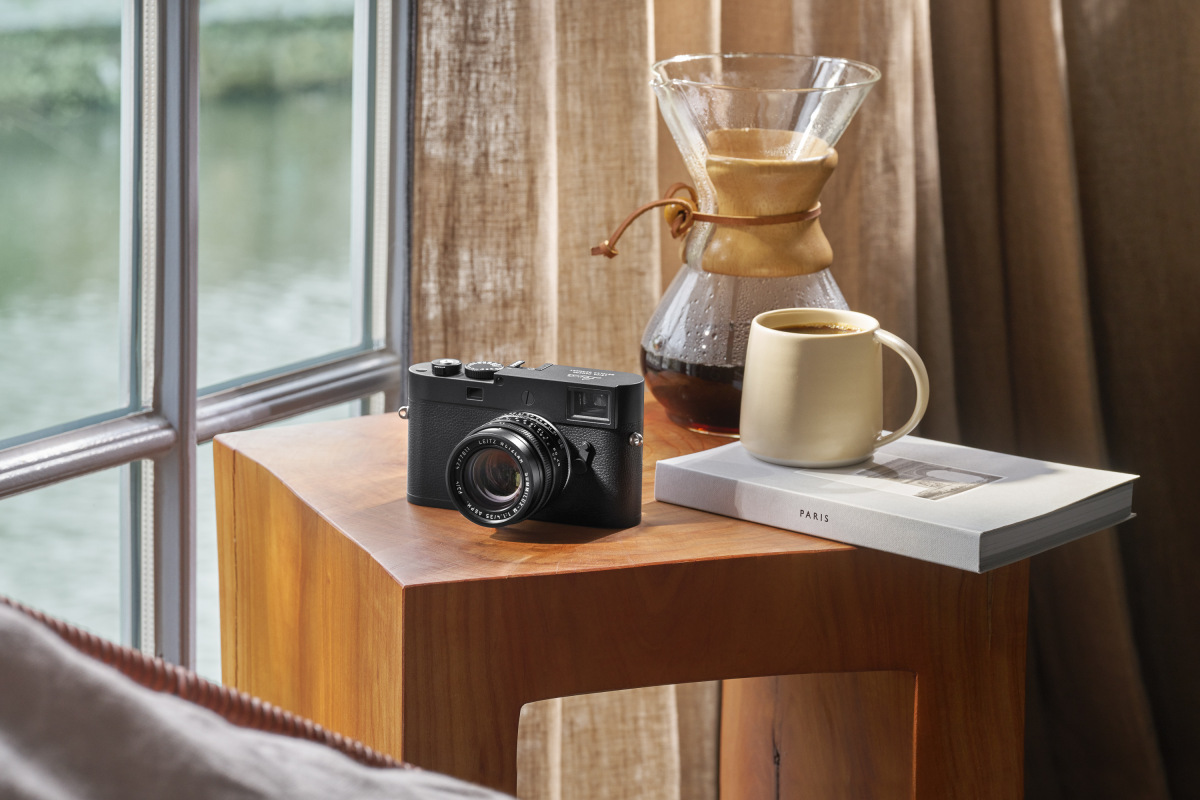
Replacing the rear LCD display, a large, easy-to-use ISO dial graces the back of the camera. Unlike the M11-P, the top ISO dial has been removed – the first camera to do so since the M10 was launched in 2017. The result is extremely clean. Other controls remain the same, though. There is still a top-mounted function button and rear clickable thumbwheel, allowing users to change a few camera settings in conjunction with the basic LCD display in the optical viewfinder. In normal shooting operation, the thumbwheel gives quick access to exposure compensation.

Even though the M11-D does away with the LCD screen, the camera supports the use of the Visoflex 2 EVF for those wanting the analog feel, but the convenience of live view. Best of both worlds. Just be aware that the EVF's role is limited to image capture with no support for playback or menu operation.

Like the previous M10-D, full camera setting menus can be accessed over Wi-Fi using the Leica FOTOS app. Initial connection is extremely simple – just press and hold the FN button for five seconds with the app open and in pairing mode. As is the case with the entire range of Leica digital cameras, you can also use the M11-D in remote live view, as well as review and download images using the app, which is available for both iOS and Android.

The Leica M11-D is a camera for, shall we say, pragmatic purists. All the aesthetics and feel of an analog Leica M, with the flexibility, discreteness and image quality of an M11-P. The camera packs a technological punch but puts distractions aside for an uninterrupted shooting experience. Previous D variants have gained a cult-like following. We'd expect the same here.
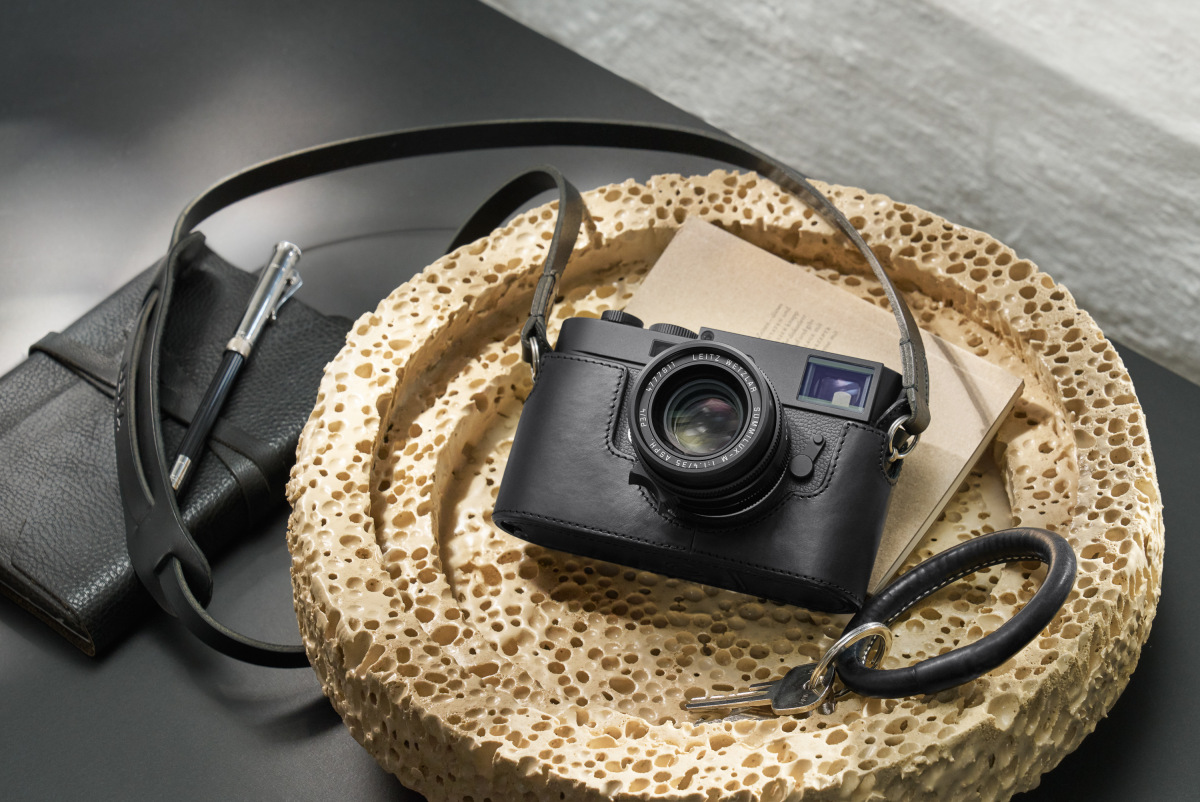
Leica M EV1
Leica’s newest addition to the M family reimagines the M experience entirely. The Leica M EV1 eliminates the traditional optical rangefinder and integrates a built-in 5.76-million-dot electronic viewfinder. Focus peaking and magnification allow precise manual focusing with any M lens, including ultra-wides, fast primes, and close-focus adapters.
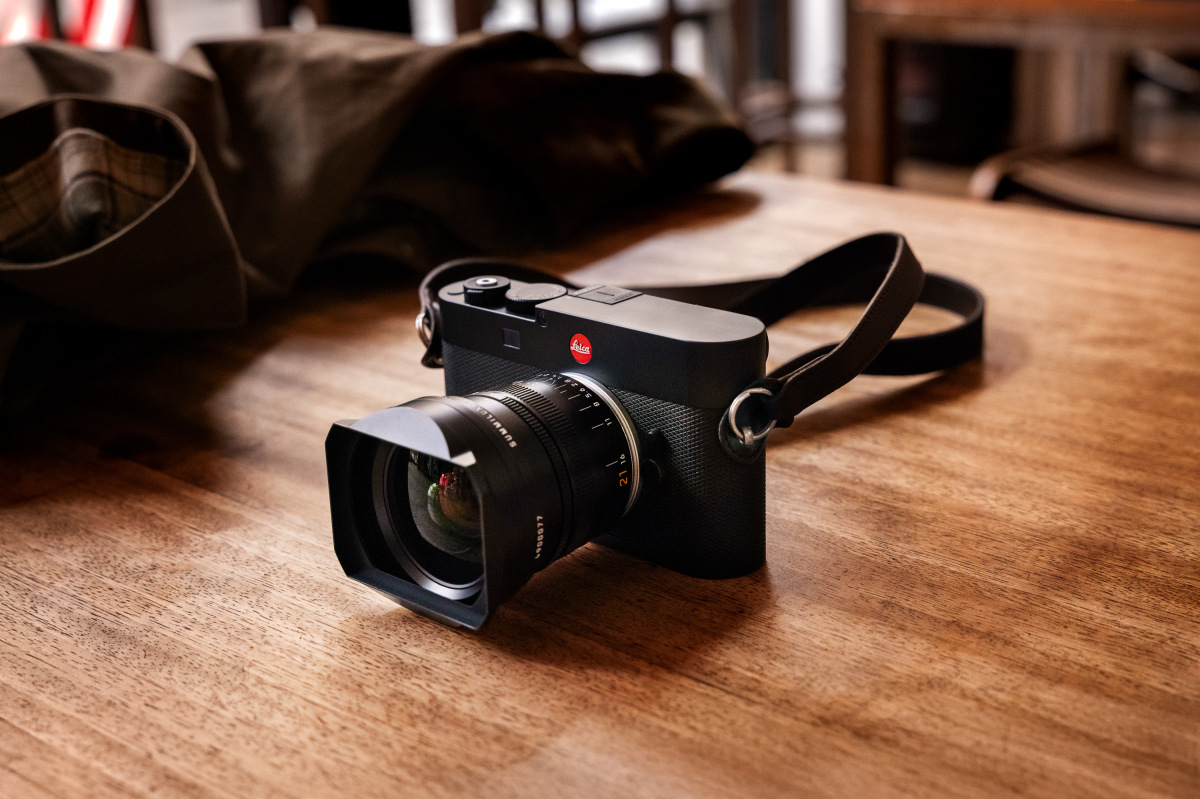
Internally, it shares the same 60 MP sensor and Maestro III processor as the rest of the M11 generation, along with Content Credentials support and 64GB of internal memory. The EV1 is slightly lighter and slimmer than a rangefinder M and is purpose-built for photographers who prefer EVF composition.

Marking the first time an M camera has featured an integrated electronic viewfinder, rather than an optical rangefinder, the M EV1 represents an evolution of the classic M concept. The camera blends the mechanical simplicity and feel that M photographers love with the flexibility and precision of a modern, integrated live view experience.
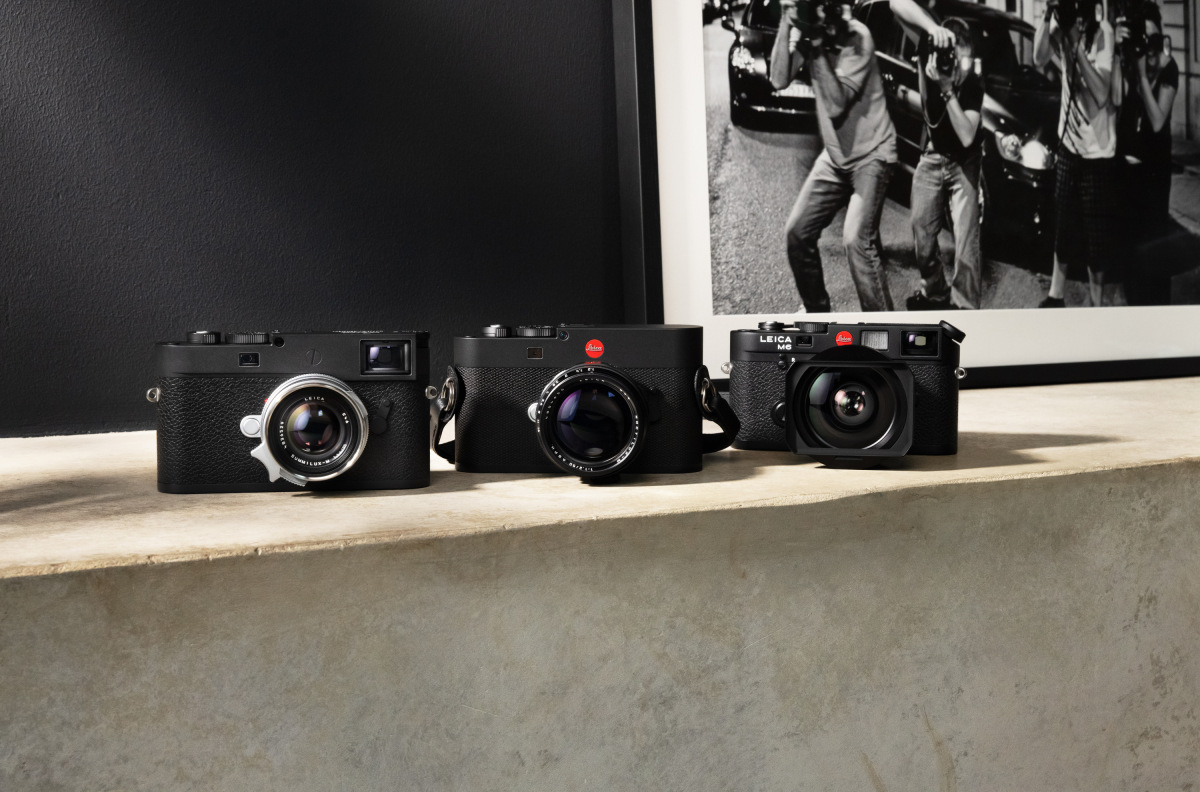
At first glance, the M EV1 looks and feels very much like a familiar digital M. But the optical rangefinder window is gone, replaced by a seamlessly integrated electronic viewfinder. Judging by the specs, the eyecup design, and the experience through the viewfinder, Leica appears to be employing the same outstanding 5.76-megapixel 1/2″ OLED panel used in the Leica Q3. It’s crisp, bright, and fluid, with a 0.76× magnification that makes composition and focus effortless in most lighting conditions. The convenient built-in diopter adjustment wheel from the Q3 also makes a welcome appearance here.
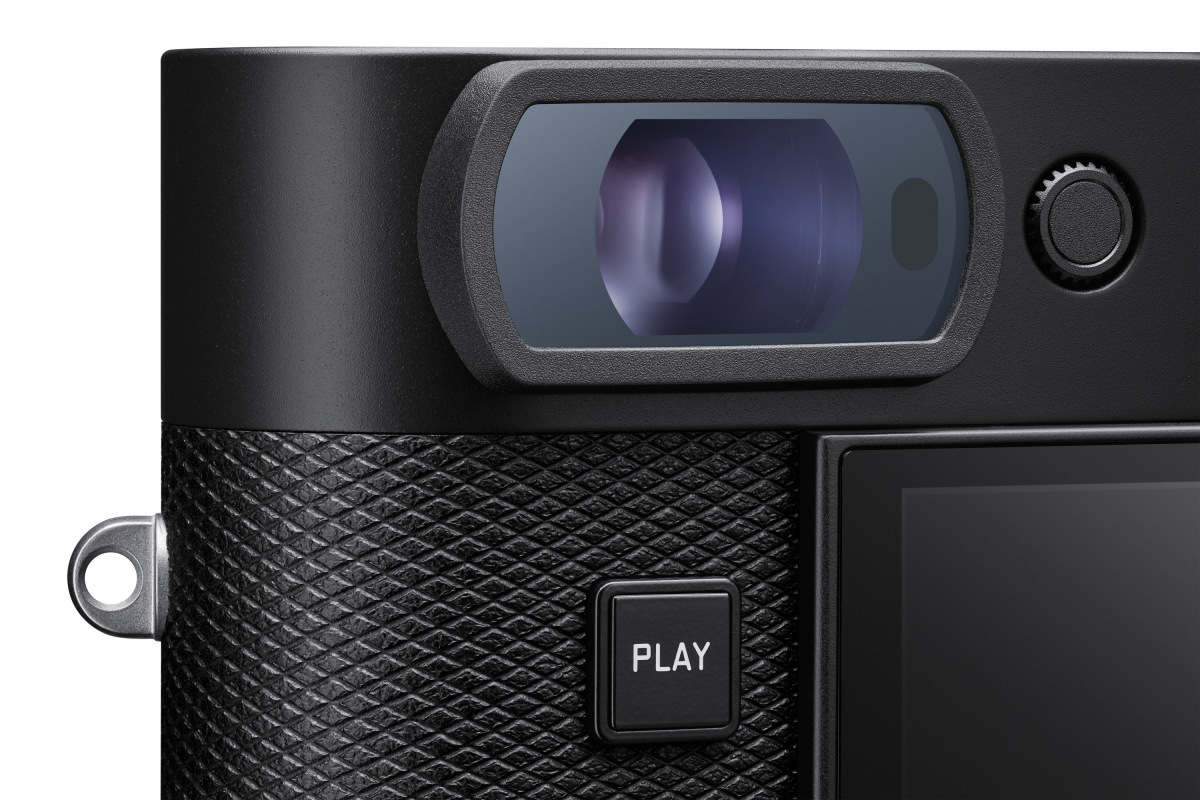
Auto or manual focus magnification and focus peaking make it easy to nail focus, whether using a 21mm Super-Elmar or a 90mm APO-Summicron. The new multifunction lever on the front of the camera replaces the traditional frameline preview lever, allowing quick toggling between focus assist modes, all without taking your eye off the viewfinder. Currently, the lever can be assigned to activate peaking, magnification, or engaging 1.3 or 1.8x digital zoom modes. I'd love to see more options available for this lever. As typical for modern Leica cameras, the function assignment menu can be activated with a long hold.
Lighter and Better Balanced
While the new viewfinder is the headlining change here, one of the first things you'll notice when picking up the M EV1 is its weight, or rather, the lack of it. The camera sheds about 50g from the already lighter M11 black. While that doesn't seem like much on paper, it’s immediately apparent in hand or on a strap. But even with the lighter heft, the camera doesn't feel flimsy. It still has that super solid M feel and the balance feels just right, especially with more compact M lenses. For heavier glass though, I'd recommend putting on a grip and the thumb support.
The simplified design, now without the rangefinder mechanism or ISO dial, allows for a cleaner front and a diamond-pattern leatherette that provides a confident, tactile grip. A nice side benefit of the EVF integration is that you can finally use a thumb support while shooting in live view, something that wasn’t possible when using the external Visoflex on the M11. Previously, you'd have to choose between the better feel and balance of the thumb support or the convenience and accurate framing of the Visoflex. Now, you get the best of both all the time. For my shooting, the thumb support never came off the camera. I'd go so far as to say it's a must-have for anyone shooting with the M EV1.

Leica M11 Generation Comparison
While all M11-generation cameras share the same 60-megapixel BSI CMOS sensor, Maestro III processor, and overall image quality, each model is tailored to a different shooting style and philosophy. The tables below highlight the core specifications and distinctive traits of every variant in the current lineup, making it easier to see how they compare at a glance. Whether you prioritize discretion, durability, heritage styling, or modern flexibility, there’s an M that fits the way you shoot.
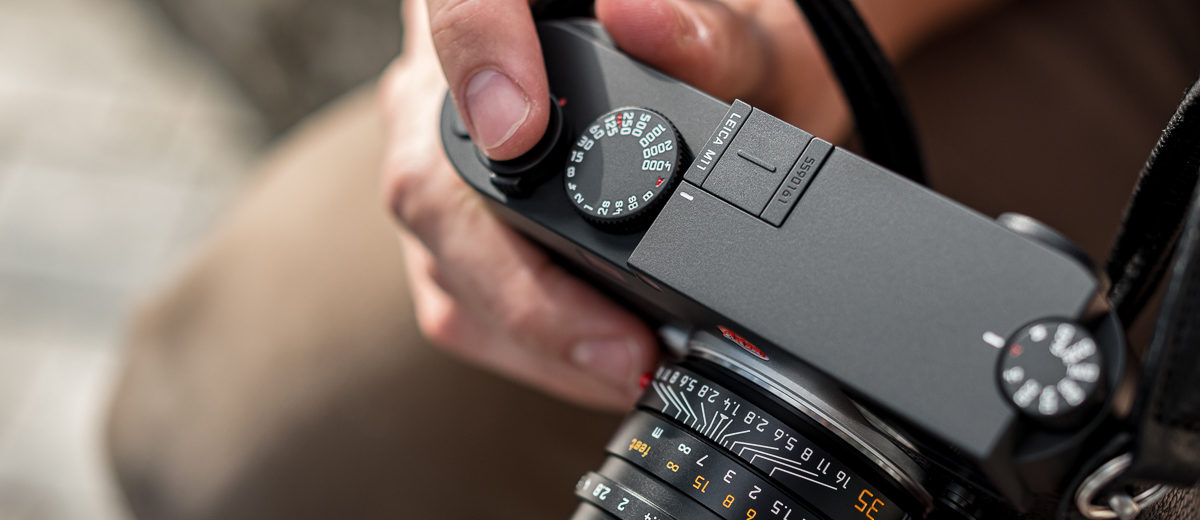
Leica M11
| Sensor | 60 MP BSI CMOS (color) |
| Internal storage | 64 GB |
| Content authentication | No |
| Optical rangefinder | Yes |
| EVF | Optional (Visoflex 2) |
| Rear LCD | 2.3 MP TFT LCD (toughened glass) |
| Model | Top Plate | Key Details |
| M11 Silver | Brass with silver chrome | Classic feel, standard weight, red Leica dot |
| M11 Black | Aluminum with matte black paint | 20% lighter, matte black finish, modern styling |
| M11 Glossy Black | Brass with high-gloss black lacquer | Glossy paint finish that patinas with use, knurled dials, classic script |
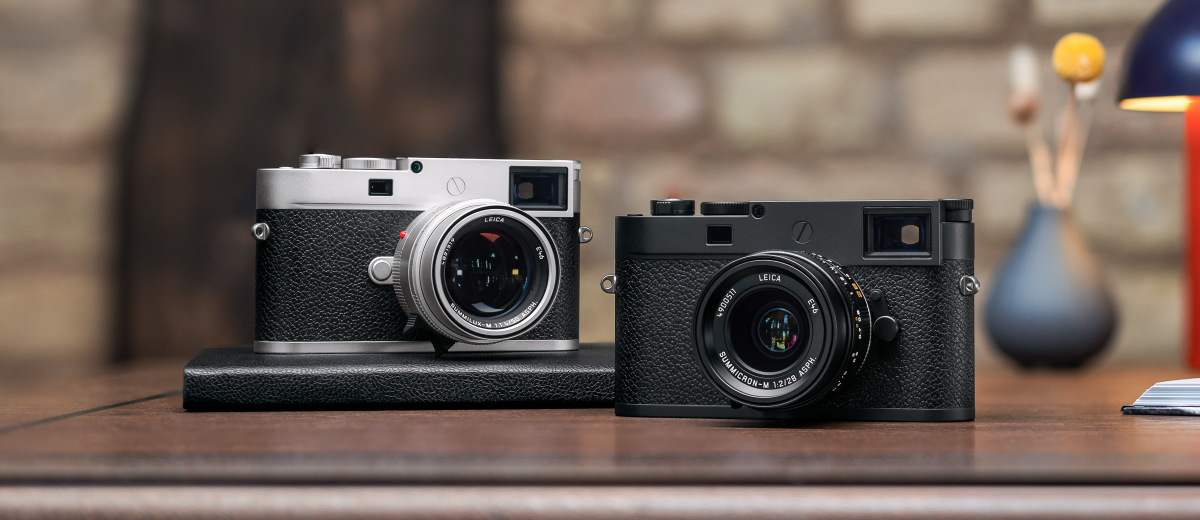
Leica M11-P
| Sensor | 60 MP BSI CMOS (color) |
| Internal storage | 256 GB |
| Content authentication | Yes (Leica Content Credentials) |
| Optical rangefinder | Yes (with black-chrome viewfinder trim) |
| EVF | Optional (Visoflex 2) |
| Rear LCD | 2.3 MP LCD with sapphire glass cover |
| Model | Top Plate | Key Details |
| M11-P Silver | Brass with silver chrome | Classic weight and balance, no red Leica dot, Leica script engraving, timeless design |
| M11-P Black | Aluminum with matte black paint | Lighter, discreet design, no red dot, black-chrome viewfinder trim, white classic engraving |
| M11-P Safari | Brass with olive green paint | Olive enamel finish, silver controls, matching green battery cover |

Leica M11 Monochrom
| Sensor | 60 MP BSI CMOS (monochrome) |
| Internal storage | 256 GB |
| Content authentication | No |
| Optical rangefinder | Yes |
| EVF | Optional (Visoflex 2) |
| Rear LCD | 2.3 MP LCD with sapphire glass cover |
| Top plate | Aluminum with matte black paint |
| Key details | Blacked out engravings, no color markings, ultimate in discreteness, low light monster |

Leica M11-D
| Sensor | 60 MP BSI CMOS (color) |
| Internal storage | 256 GB |
| Content authentication | Yes (Leica Content Credentials) |
| Optical rangefinder | Yes |
| EVF | Optional (Visoflex 2, capture only) |
| Rear LCD | None (ISO dial on back) |
| Top plate | Aluminum with matte black paint |
| Key details | Digital camera with analog vibes, same tech but with no digital distractions, for the purist |
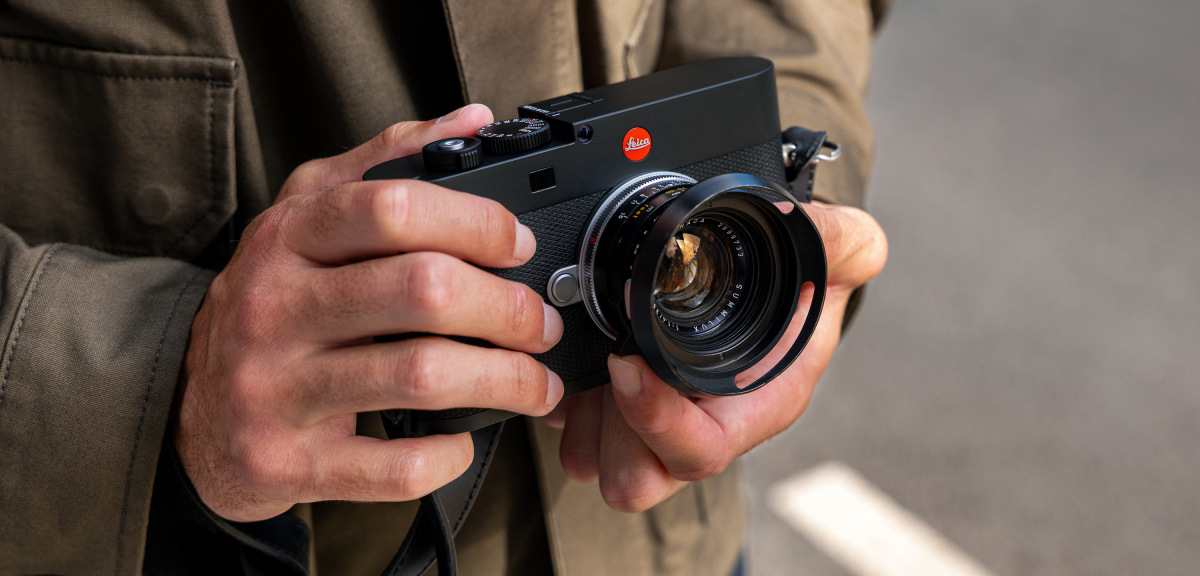
M EV1
| Sensor | 60 MP BSI CMOS (color) |
| Internal storage | 64 GB |
| Content authentication | Yes (Leica Content Credentials) |
| Optical rangefinder | No (EVF only) |
| EVF | Built-in (5.76 MP OLED) with adjustable diopter |
| Rear LCD | 2.3 MP LCD with sapphire glass cover |
| Top plate | Aluminum with matte black paint |
| Key details | First M camera with built-in EVF, 50g lighter than black M11/M11-P, multifunction front lever |

Bottom Line
Alright, so maybe that table above looks a little overwhelming. If you just want the TLDR version to figure out which member of the M11 family is right for you, here it is:
Leica M11
The foundation of the lineup. A classic rangefinder experience with modern imaging performance. Ideal for photographers who want the purest connection to the M heritage with full color capture, maximum resolution, and traditional operation, but don't need the upgrades of the M11-P.
Leica M11-P
A refined, professional version emphasizing durability, discretion, and image integrity. Adds sapphire glass protection, expanded internal memory, and Leica Content Credentials. Perfect for working photographers who need reliability and provenance in their workflow, or just those that want the top-of-the-line.
Leica M11 Monochrom
A purpose-built black-and-white camera that delivers unmatched tonality and high-ISO performance. Designed for photographers who see the world in light and shadow and want a pure, uncompromised monochrome tool (and won't miss color).
Leica M11-D
Digital performance with an analog soul. Removes the rear LCD in favor of a minimalist ISO dial and classic styling. Ideal for photographers who prefer a distraction-free shooting experience and the tactile feel of film-era Ms.
Leica M EV1
A reimagined M with a built-in electronic viewfinder in place of the optical rangefinder. Combines traditional M ergonomics with modern precision focusing and full-time Live View in the lightest ever digital M. Best for photographers who love M lenses but prefer EVF composition and flexibility.
Mastering Rangefinder Focusing
Of course, we can't talk about Leica M rangefinders without addressing the elephant in the room. While the rangefinder system is simple in concept, achieving perfect focus consistently takes a bit of practice. Once mastered though, it becomes second nature and one of the most rewarding aspects of shooting with a Leica M. In the video below, I share some of my top tips and techniques for honing your rangefinder focusing skills in real-world situations.
Conclusion
After seven decades of evolution, the Leica M remains unlike any other camera system. Whether you prefer the purity of the rangefinder, the precision of a live view workflow, or the timeless aesthetic of an analog-inspired digital, there is an M built around the way you see. Each model in the current lineup – M11, M11-P, M11 Monochrom, M11-D, and the new M EV1- embodies the same commitment to simplicity, craftsmanship, and image quality that has defined the series since 1954.
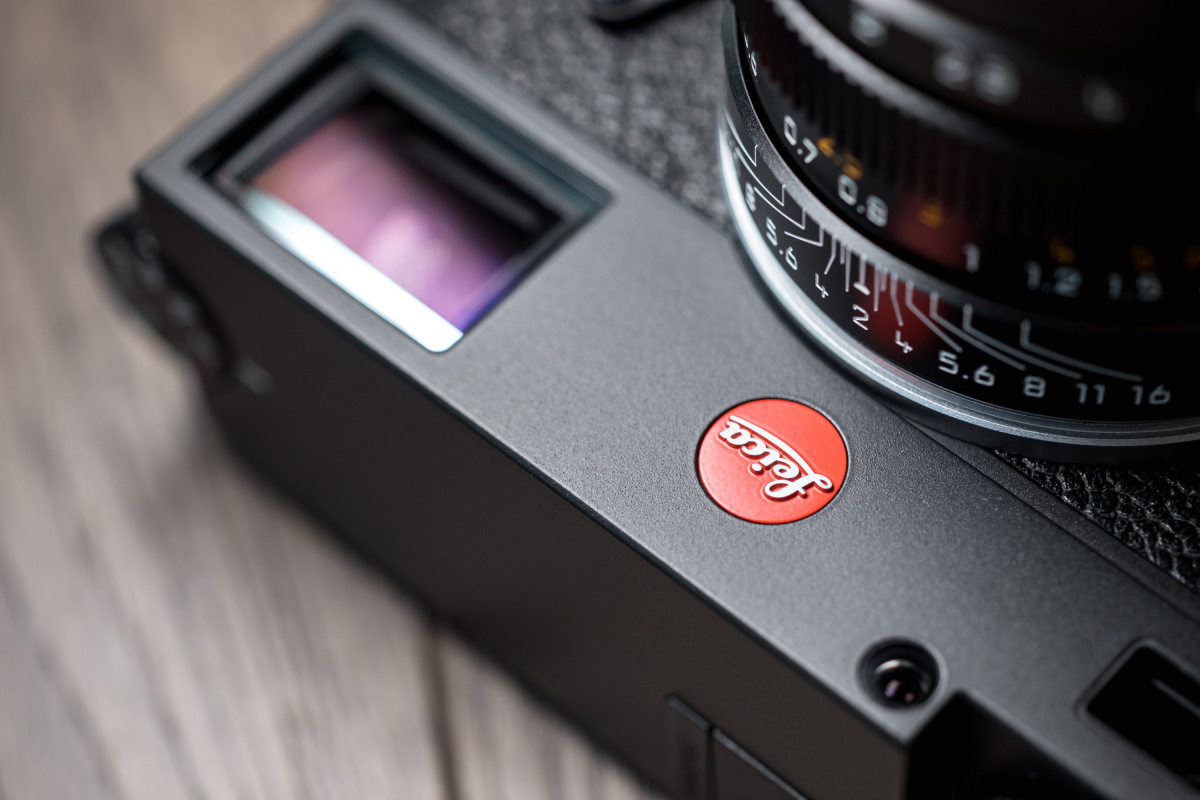
The M system is not about chasing spec sheets or having the camera do everything for you. It's about being a participant in the picture making process, being fully present in the act of seeing and capturing. From the first frame to the last, an M encourages deliberate photography, where every decision is made by the person behind the lens, not automatic picture modes.
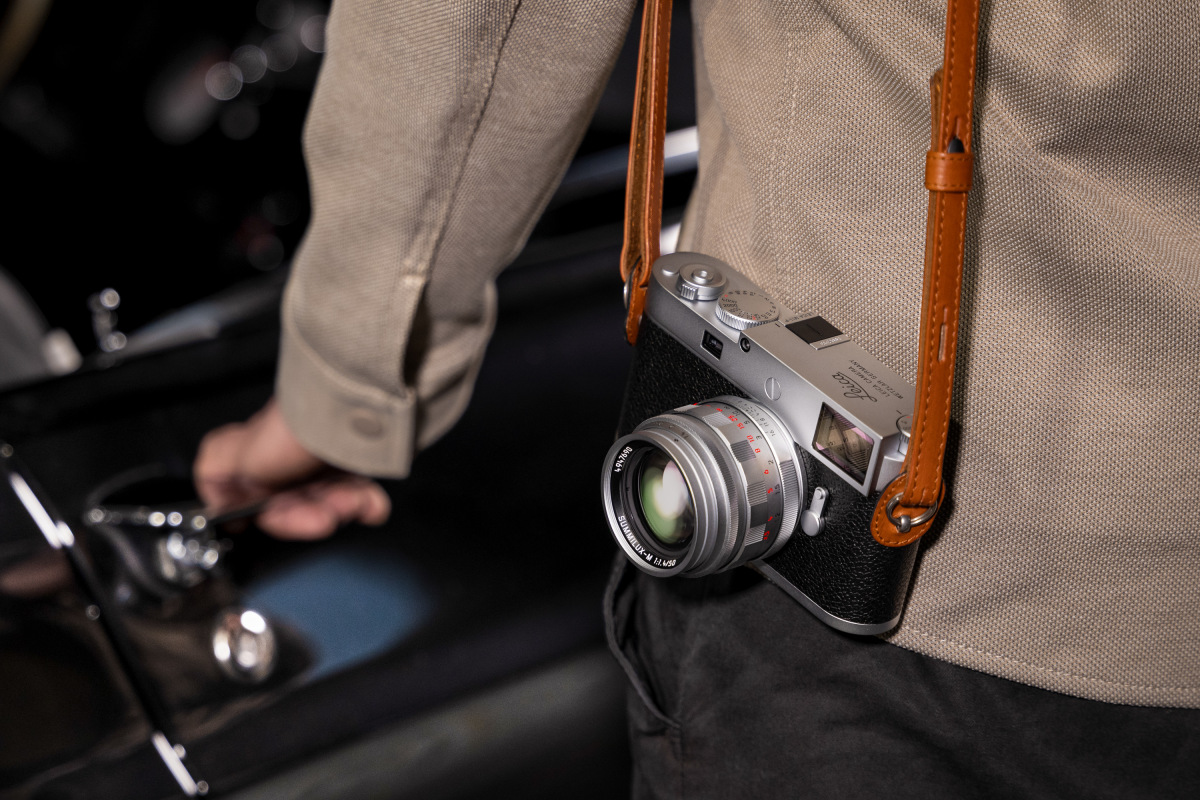
Whichever M you choose, you aren't just buying a camera. You're joining a legacy of photographers who value connection over convenience, craft over automation, and the enduring pleasure of making images with intent. The tools may evolve, but the philosophy stays the same: the Leica M remains a camera built for photographers who love the process as much as the result.
If you're looking to purchase an M11, or any Leica for that matter, whether new or used, please consider doing so at Leica Store Miami. It's the best way to support this site and our YouTube channel.

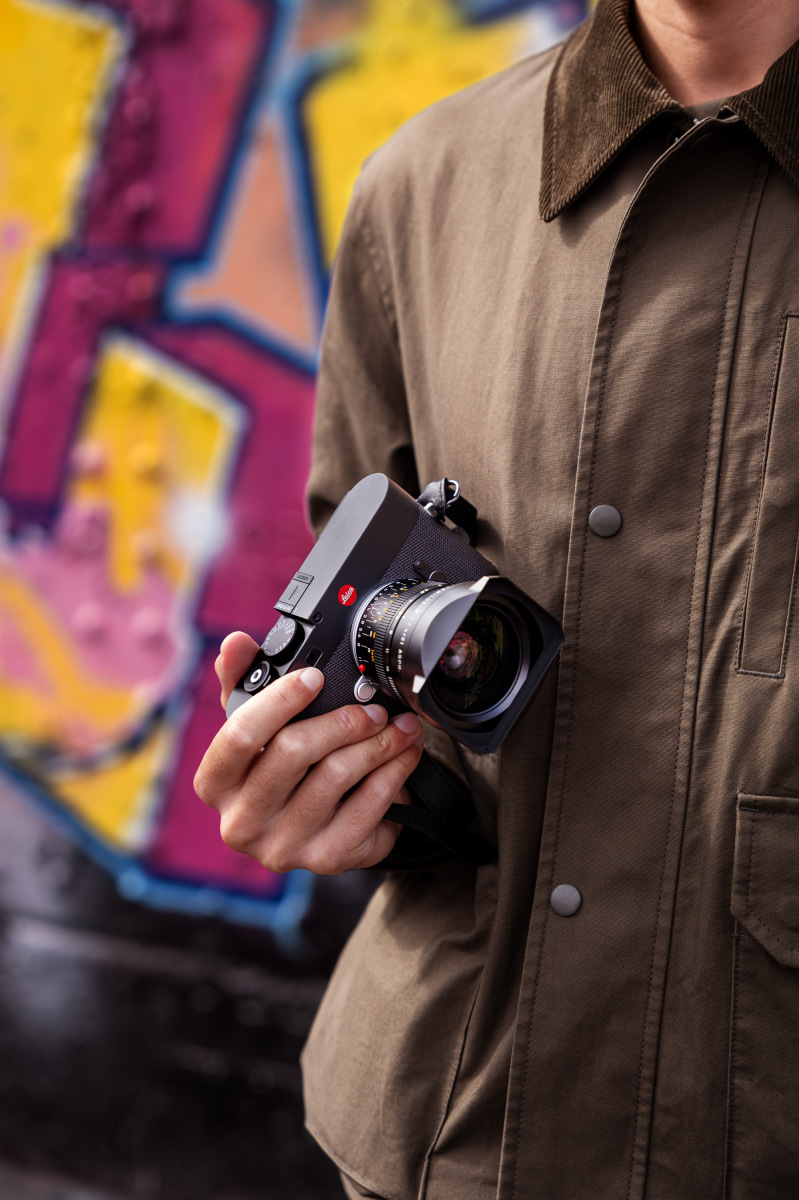
Leave a Reply